Many different types of birds make it challenging to identify them. Some birds are blessed with a beautiful orange chest making them more distinguishable. Here is a list of 21 birds identified by their orange chest.
Contents
1. Baltimore Oriole
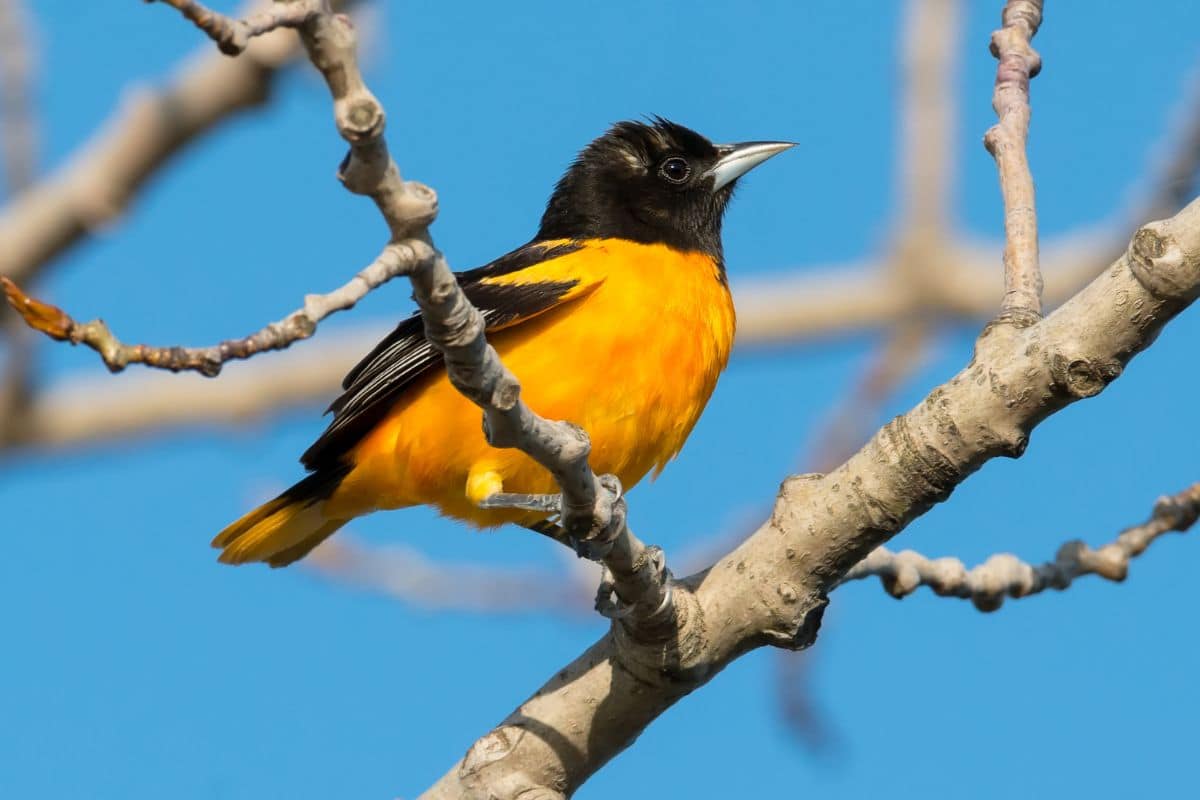
The Baltimore Oriole is a colorful songbird found in the East. You can find these birds in open woods or riverside grooves, and this bird is easily recognized by its bright orange plumage.
2. American Robin
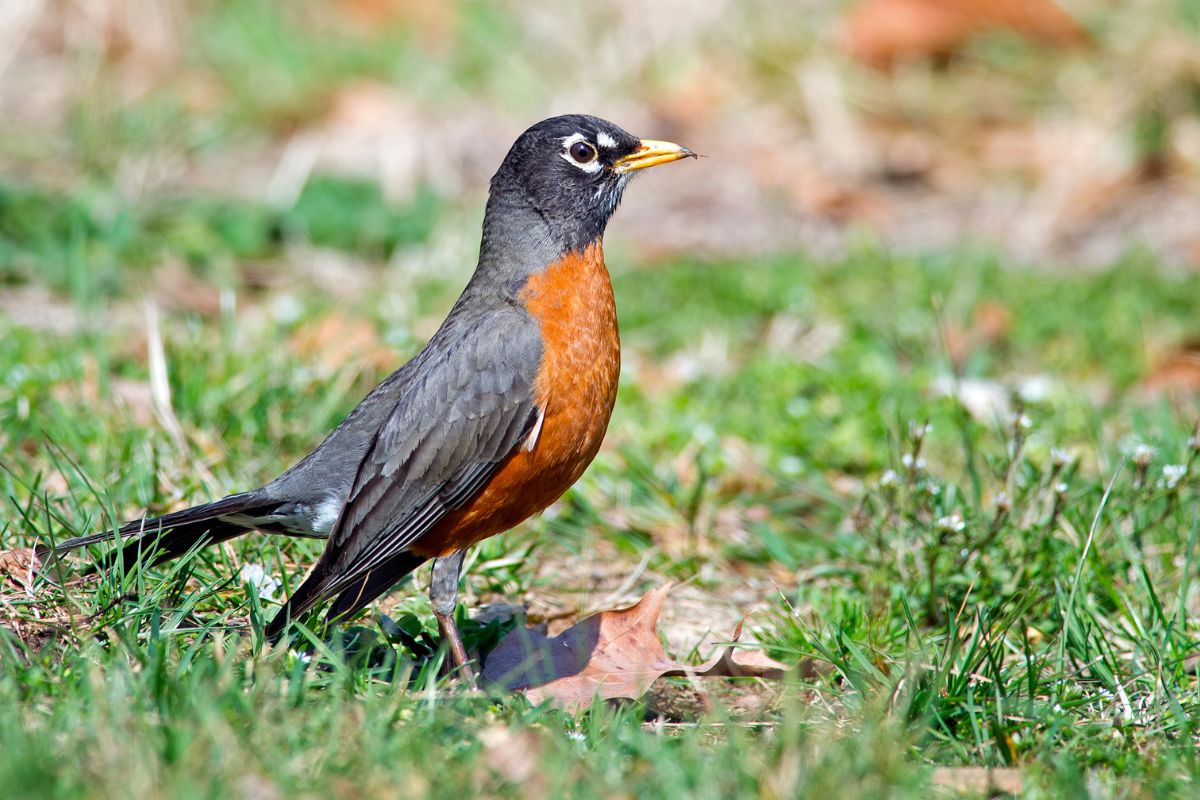
You will often see American Robins on lawns across North America. These birds are early risers and are usually hunting for earthworms. People delight in their beautiful orange chest and their lovely songs.
3. Eastern Bluebird
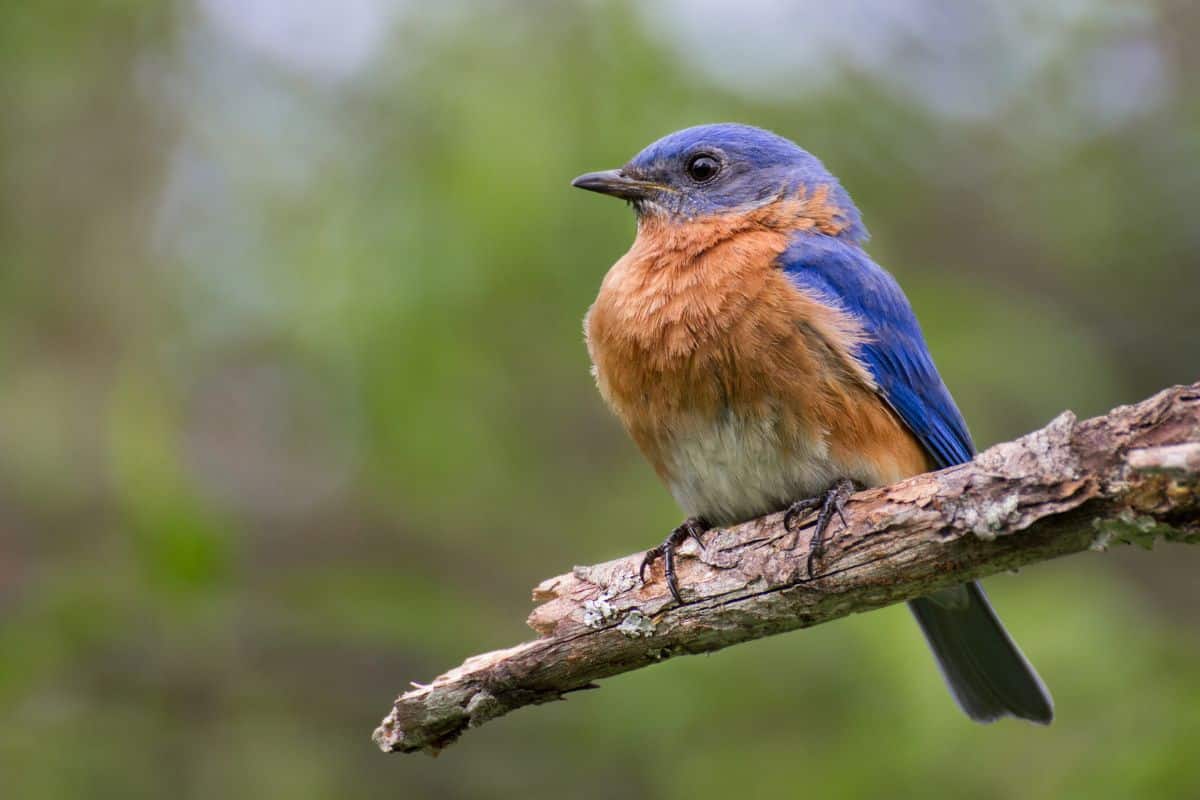
Eastern bluebirds are typically observed in the eastern regions of North America. They have a brilliant blue on their back, and their chest has an orangy brown hue.
4. Say’s Phoebe
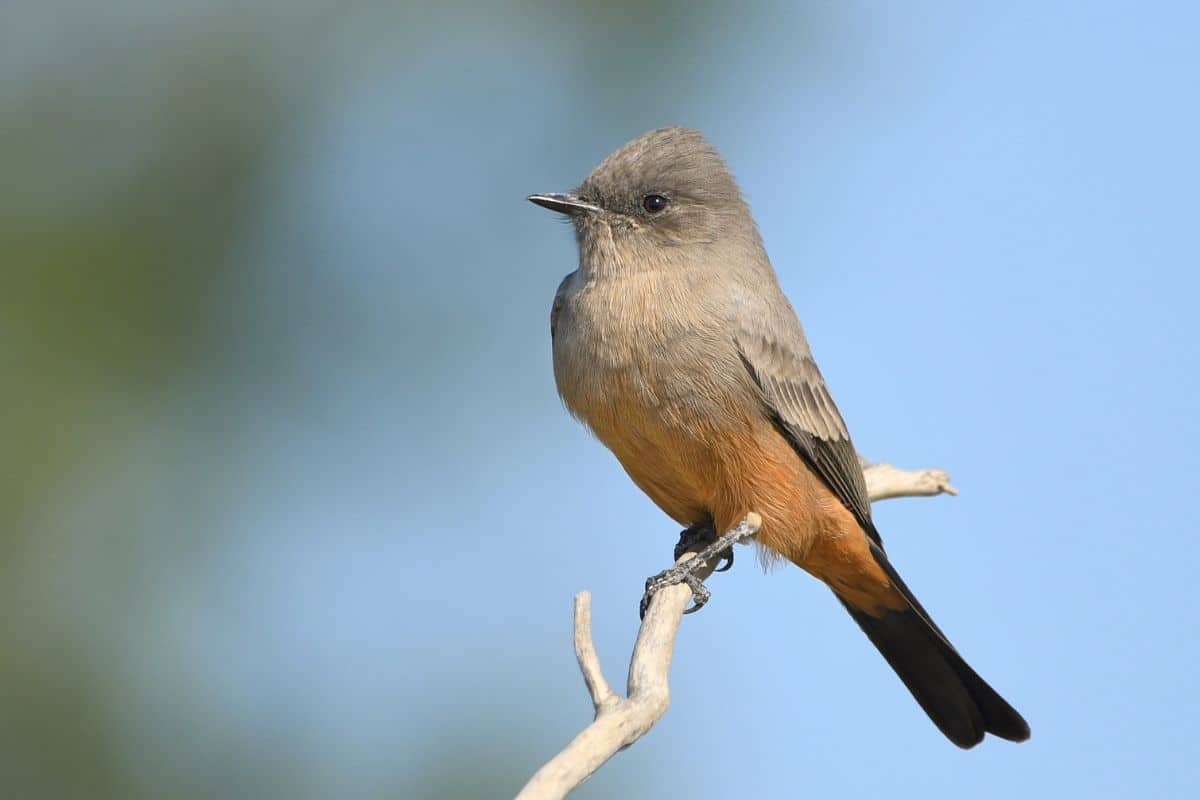
Say’s Phoebes are unconcerned with other people and will nest anywhere. Their dark orange chests easily identify them.
5. Allen’s Hummingbird
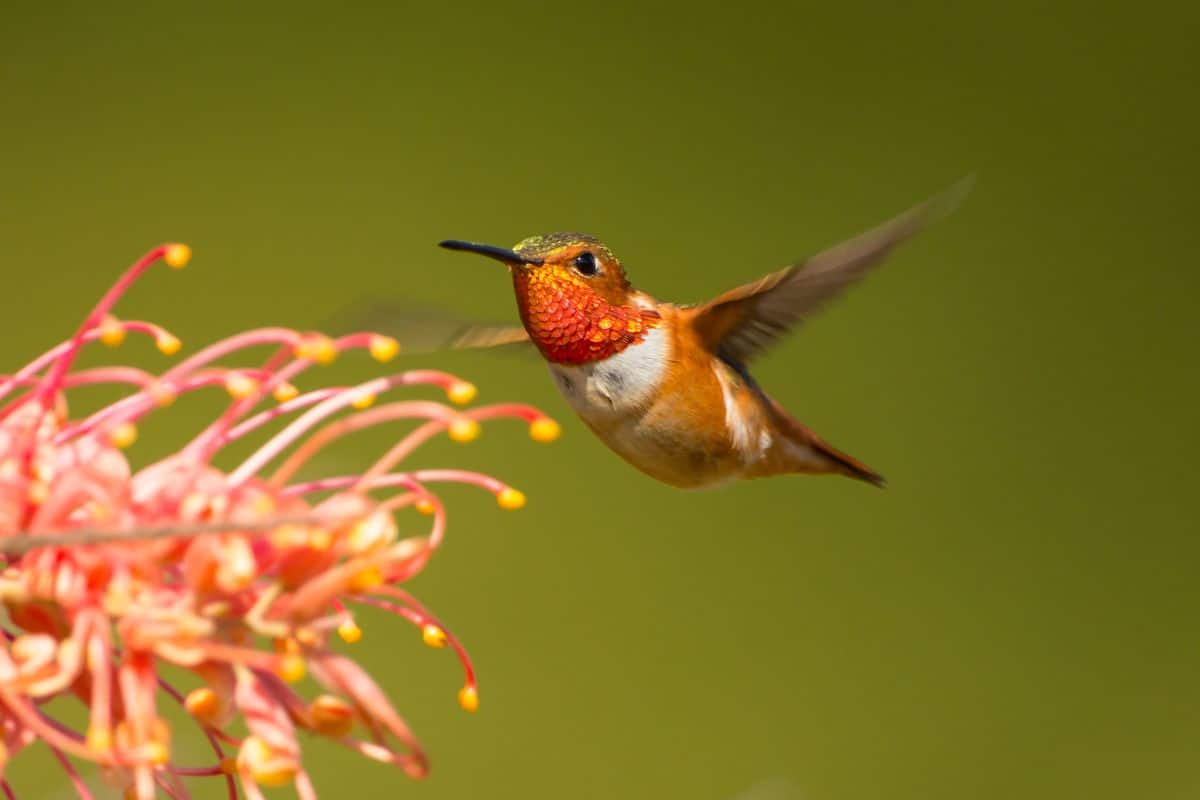
The Pacific Coast is home to Allen’s Hummingbird in the spring. The males use their flashy orange chests to attract a mate, and most of these birds winter in Mexico.
6. Red Knot
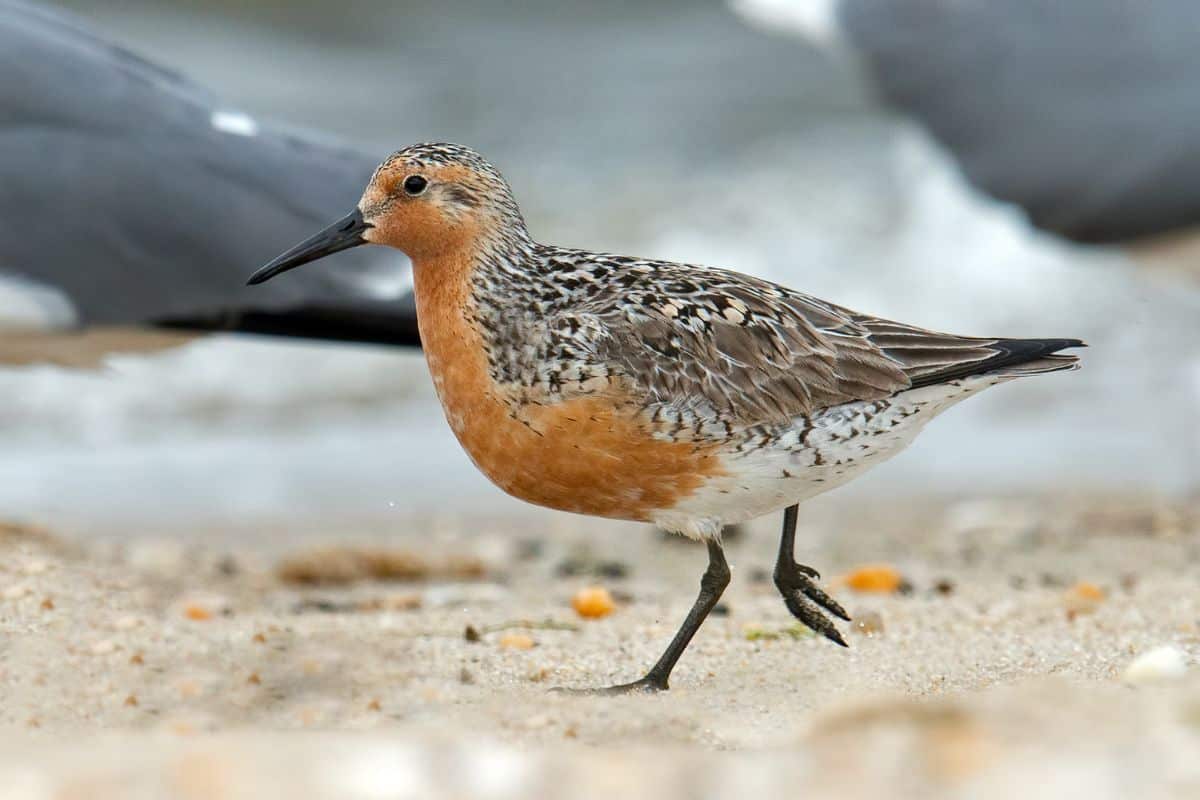
You typically see Red Knots on flat beaches, mudflats, and lagoons. The breeding adults have orange chests with a complicated color pattern on their backs.
7. Black-headed Grosbeak
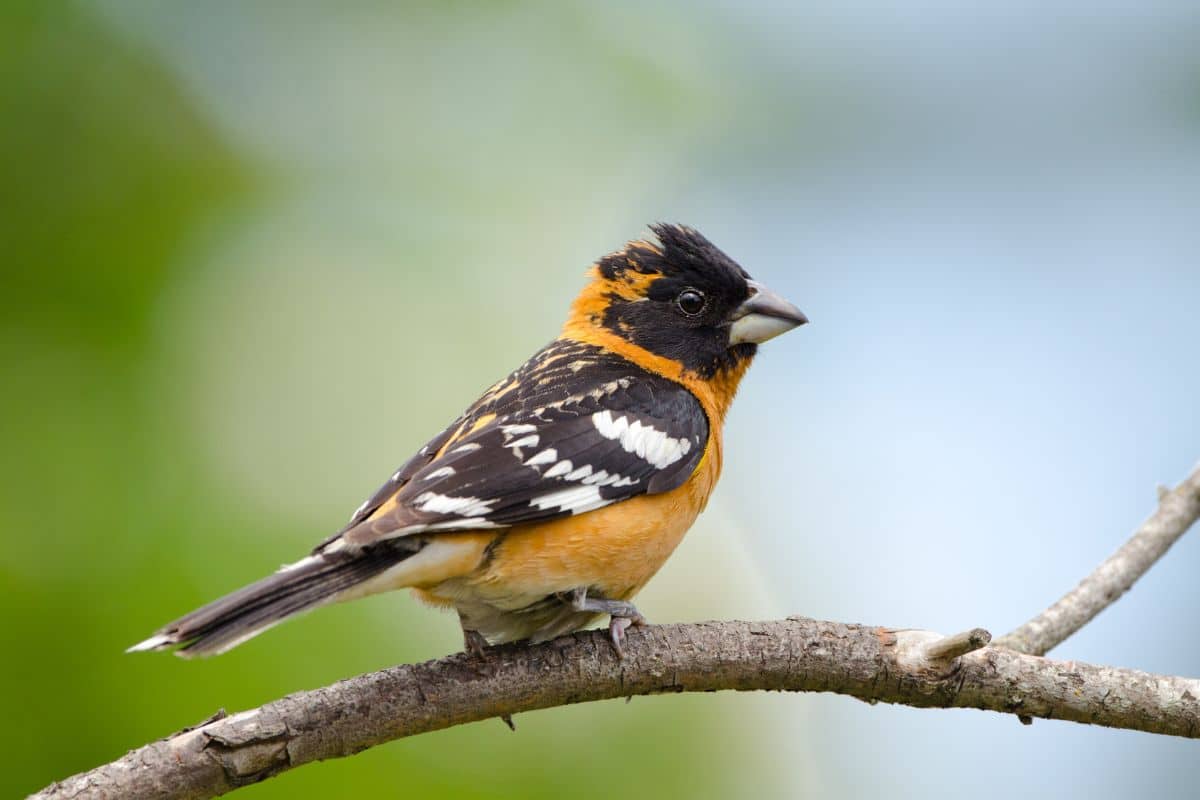
These hardy songbirds have huge bills. They have orange on their chests, but you will also notice bright yellow under their wings when they are in flight.
8. Blackburnian Warbler
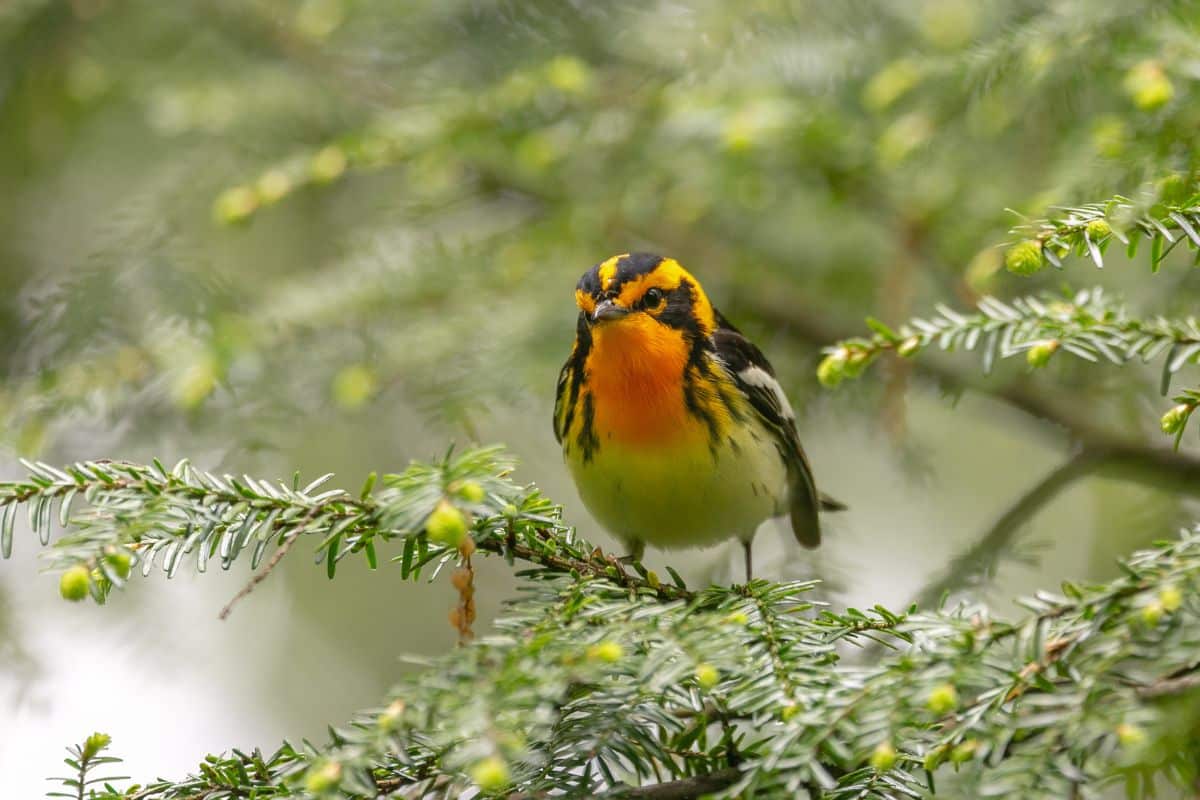
You will not mistake these birds for anything else. Their unique fire-orange face and throat stand out against their black and white feathers. They may cause a shudder with their incredibly high-pitched finale to their songs.
9. Hooded Oriole
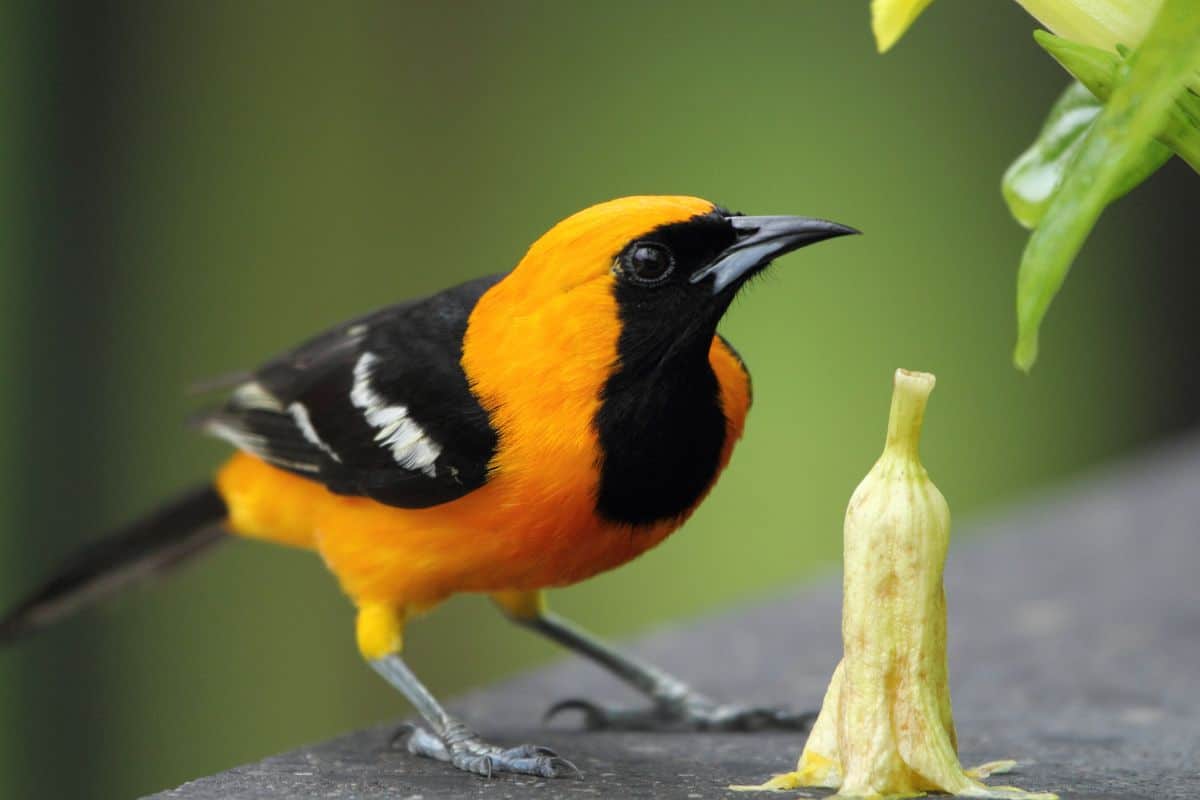
The male Hooded Oriole has a bright orange body with black wings and a black tail. This social bird will often join other flocks. Bird watchers will find them in open woods and areas with palm trees.
10. Altamira Oriole
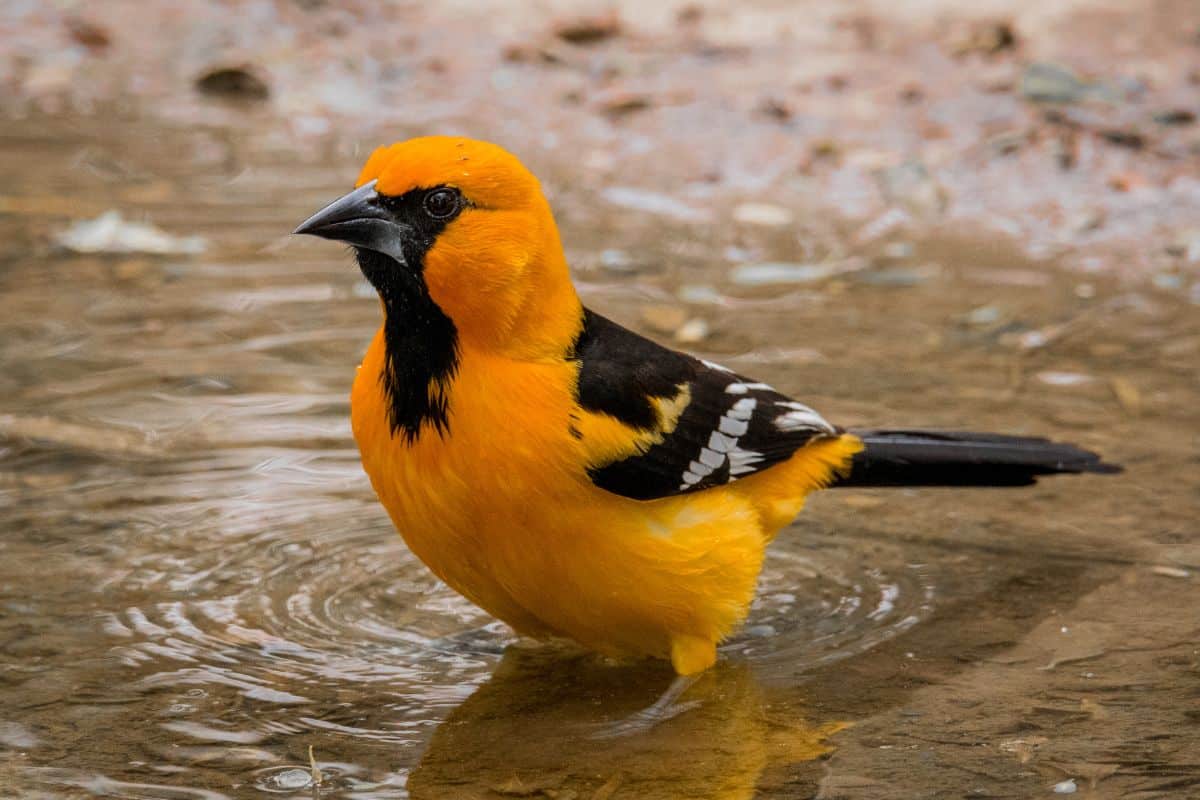
These striking songbirds have a beautiful orange body with a black throat, mask, tail, and back. You can find them nesting in wooded areas where they forage for small fruit and insects. They live primarily in Mexico and Central America.
11. American Redstart
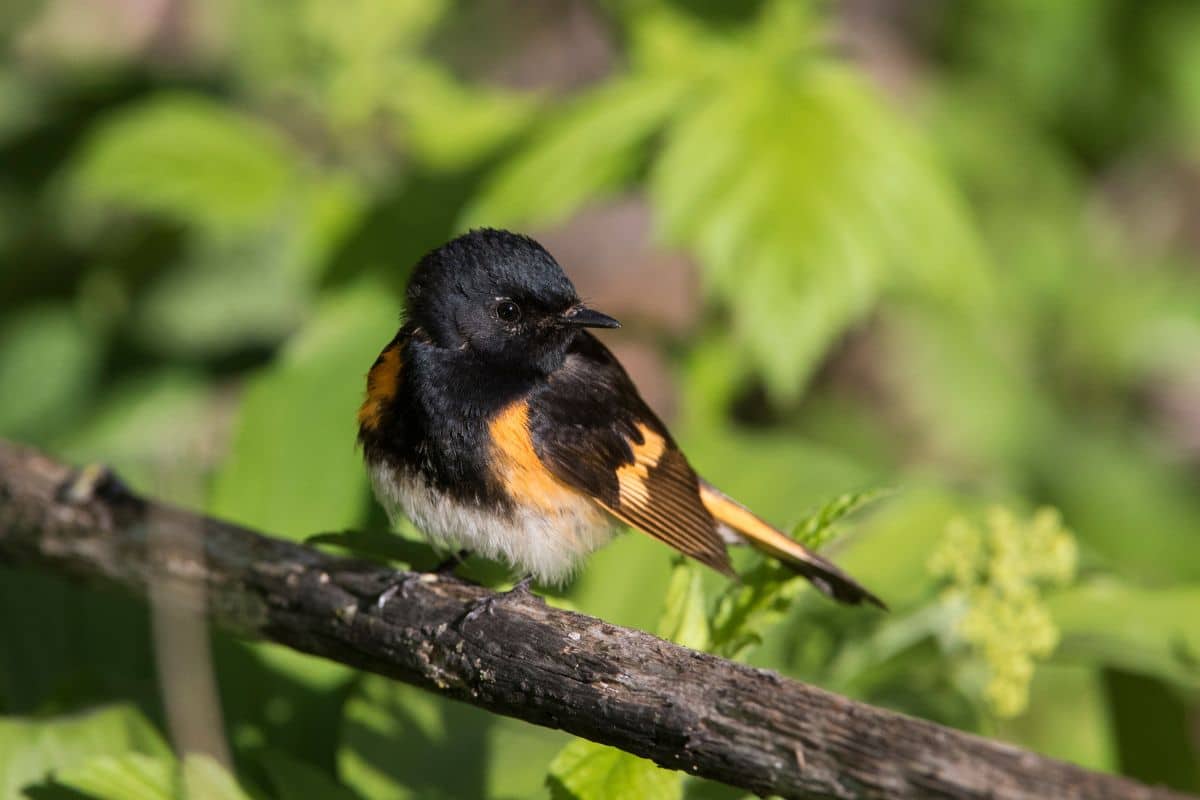
The American Redstart is a warbler that flits quickly from tree to tree. They hold their wings and tail spread out to show off their bright patches of orange. The American Redstart feed primarily on insects.
12. Red-breasted Nuthatches
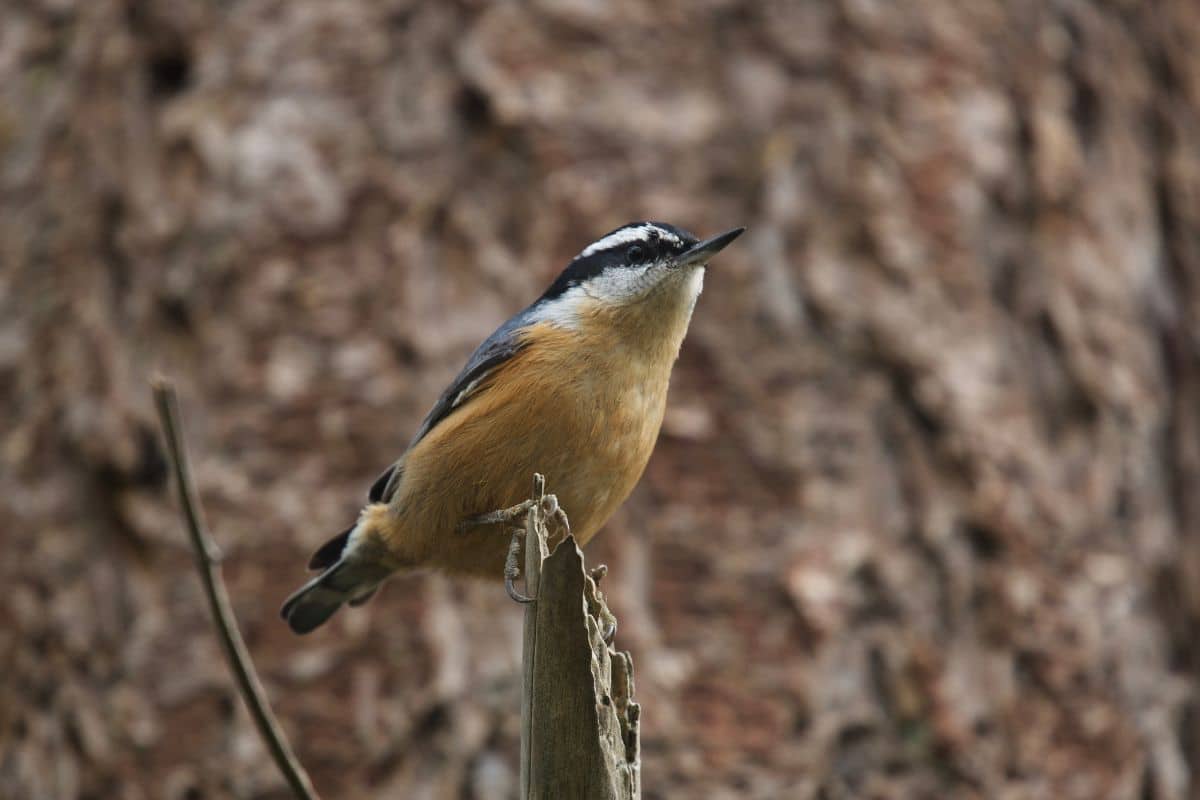
Despite its name, the Red-breasted Redstart has a pale red body with more of an orangish hue. You will often see these energetic birds at your birdfeeders and hear their distinctive nasal call.
13. Brambling
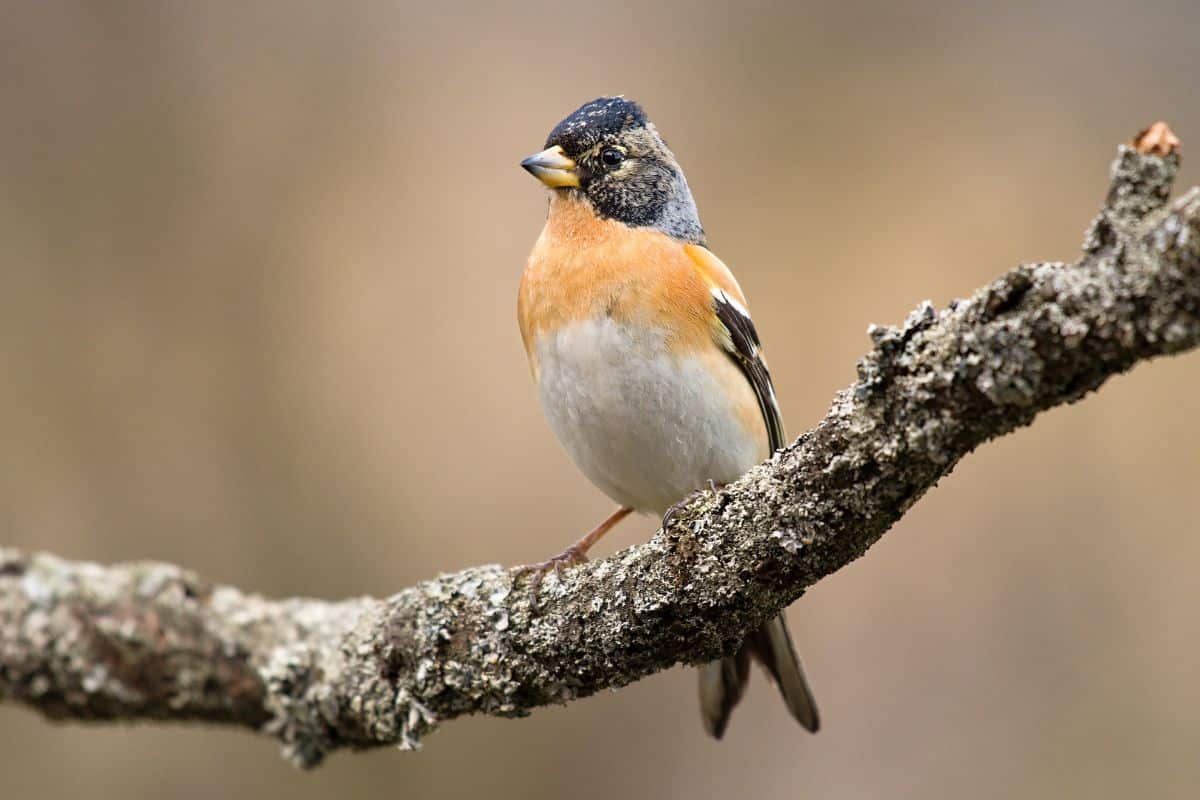
You will find these orange-breasted finches in Scandinavia and the UK. They feed mainly on nuts, seeds, and berries. In the summer, they will also eat insects and invertebrates.
14. Western Bluebird
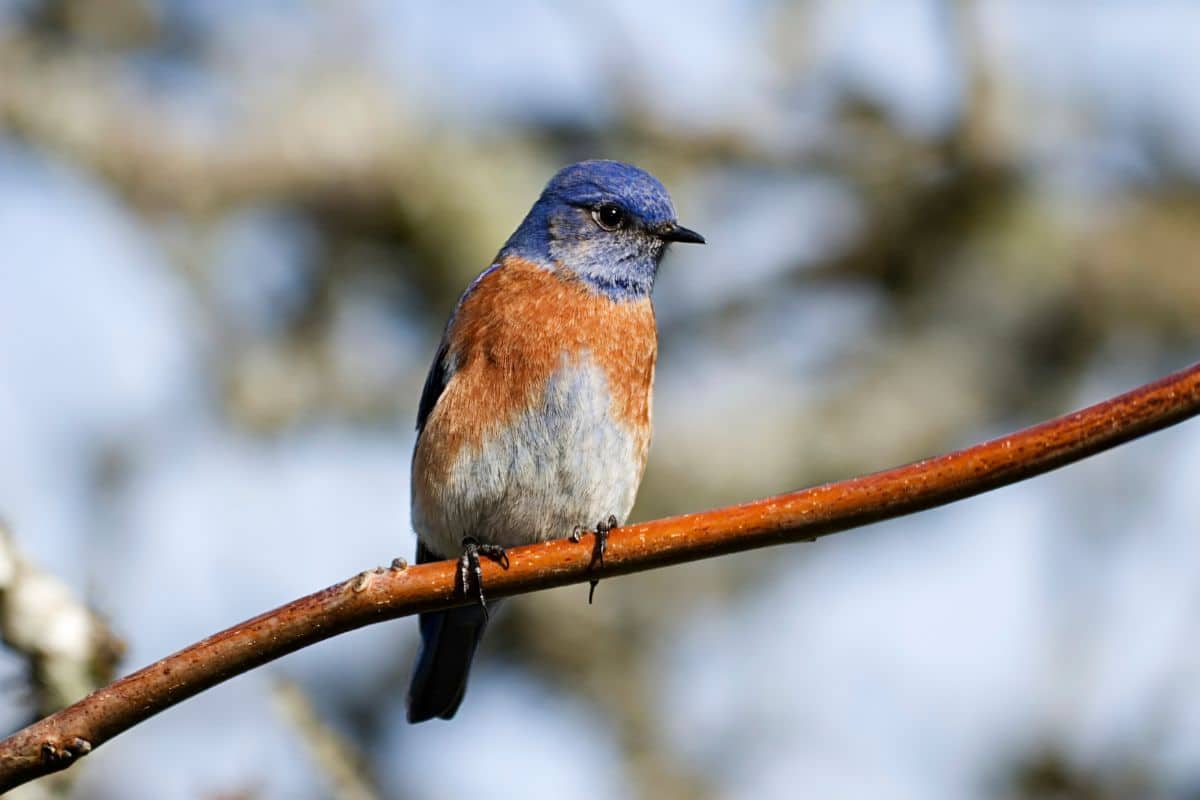
The orange-breasted Western Bluebird makes its nest in holes in trees or nest boxes. They will dive to the ground to catch insects. These birds weigh one ounce and need to consume 15 calories daily to survive.
15. Northern Red Bishop
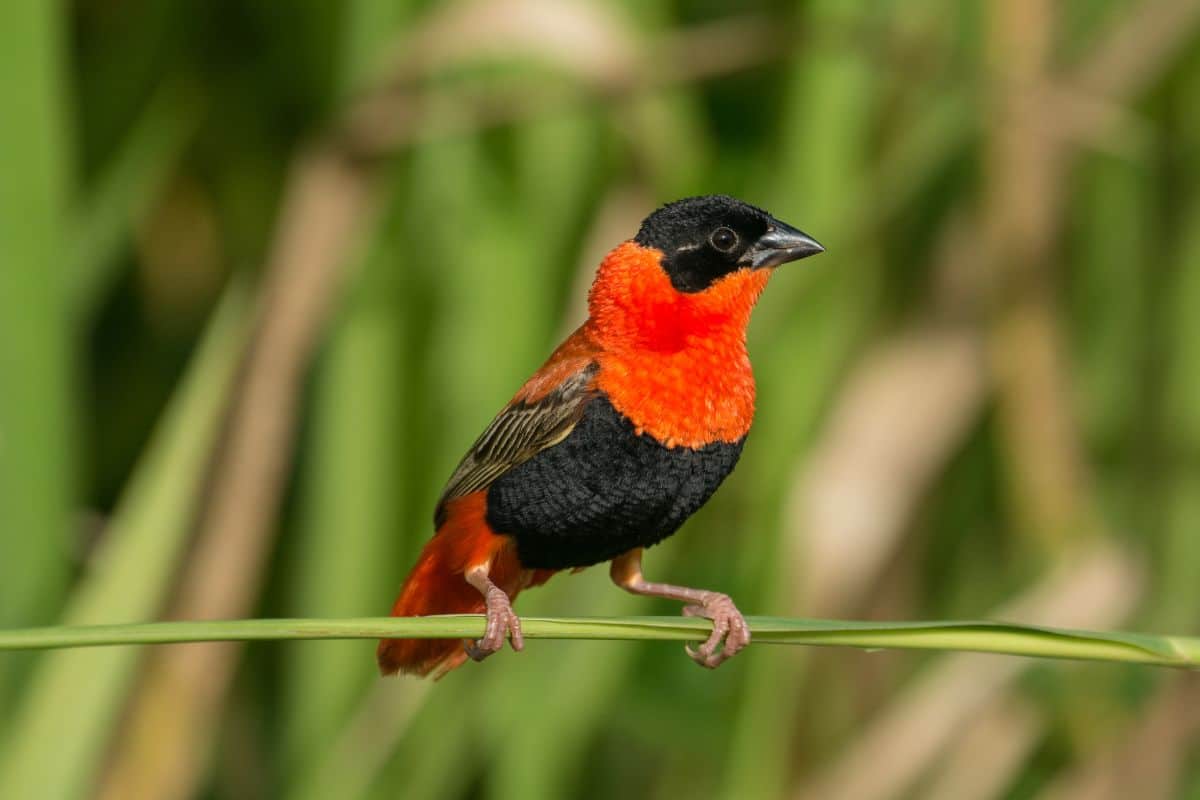
You might know these birds as the Orange Bishops. They are African finches renowned for the males’ extraordinary nest-weaving abilities. You will find these colorful birds south of the Sahara Desert and north of the Equator.
16. Western Tanager
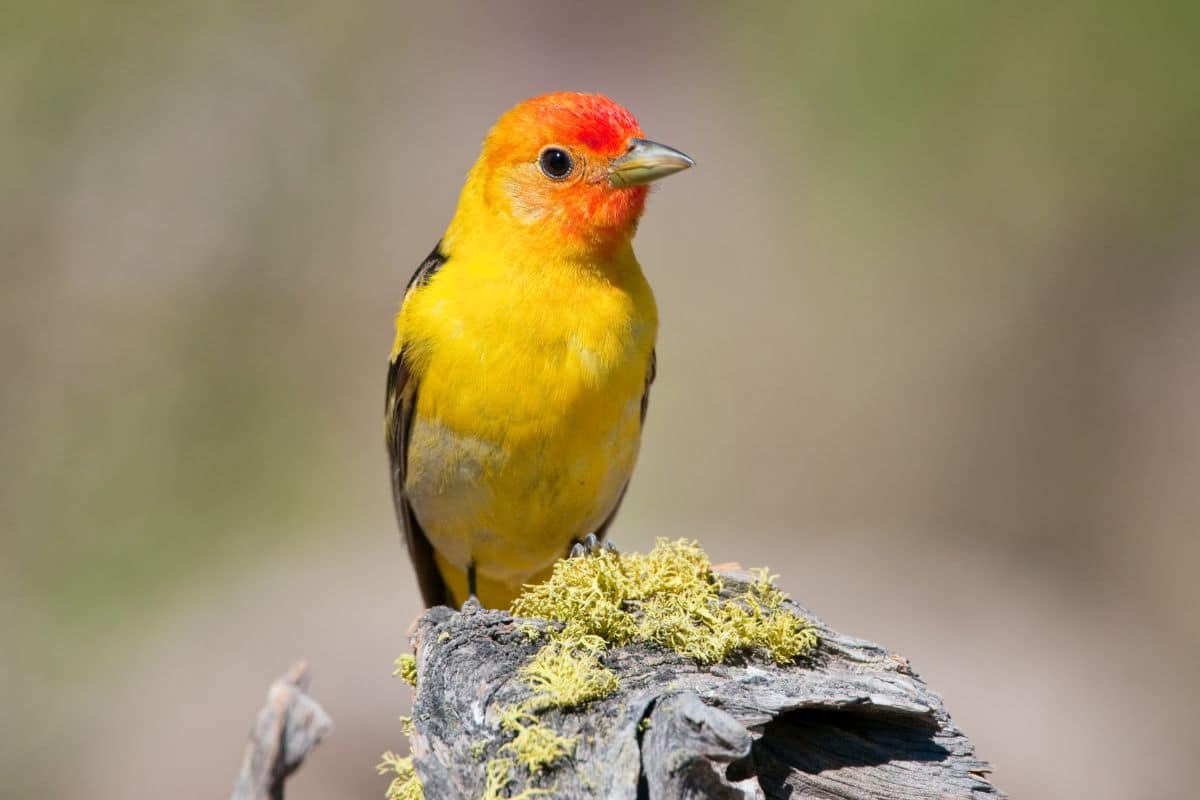
Bird enthusiasts enjoy the bright yellow and orange hues of this bird. These colorful birds live in open woods, and you can often find them hiding among the evergreens all over the West. They have a distinctive chuckling call.
17. Rufous Hummingbird
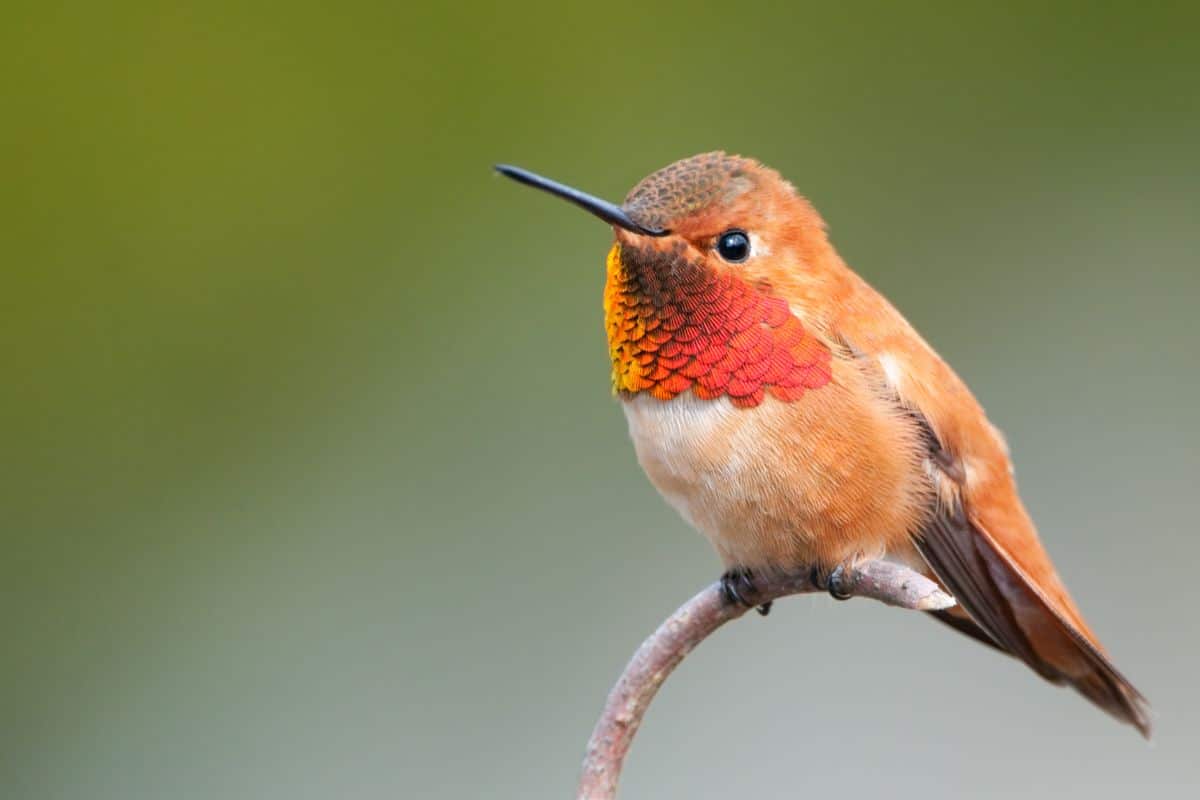
These brilliant orange birds are the most aggressive hummingbirds in North America and will attack feeders, flowers, and other hummingbirds. You can find these birds in California, Pacific Northwest, Alaska, and even the Rocky Mountains.
18. Varied Thrush
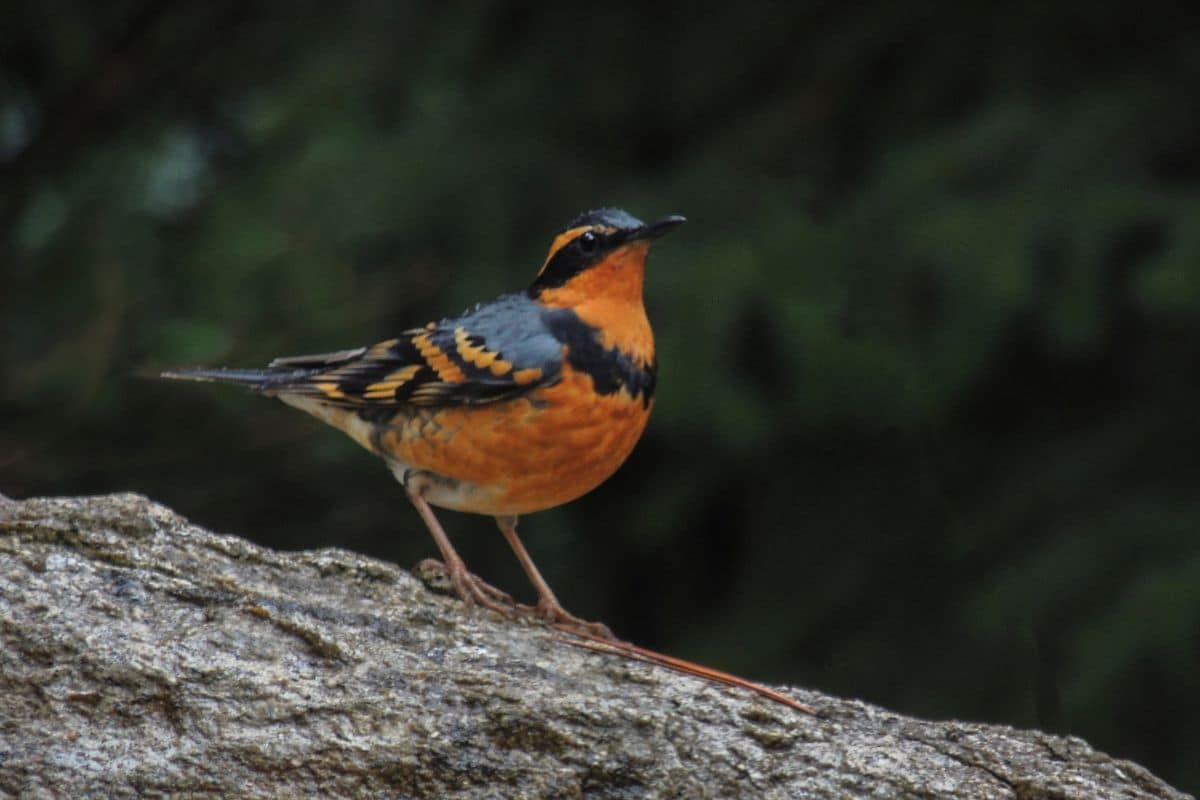
You can find the Varied Thrush in the Cascades, the Northern Rockies, and the Pacific Coast. This shy bird has a simple ringing song, and its burnt-orange breast and belly stand out from its dark grey back. They eat insects in the summer and switch to berries in the winter.
19. Western Spindalis
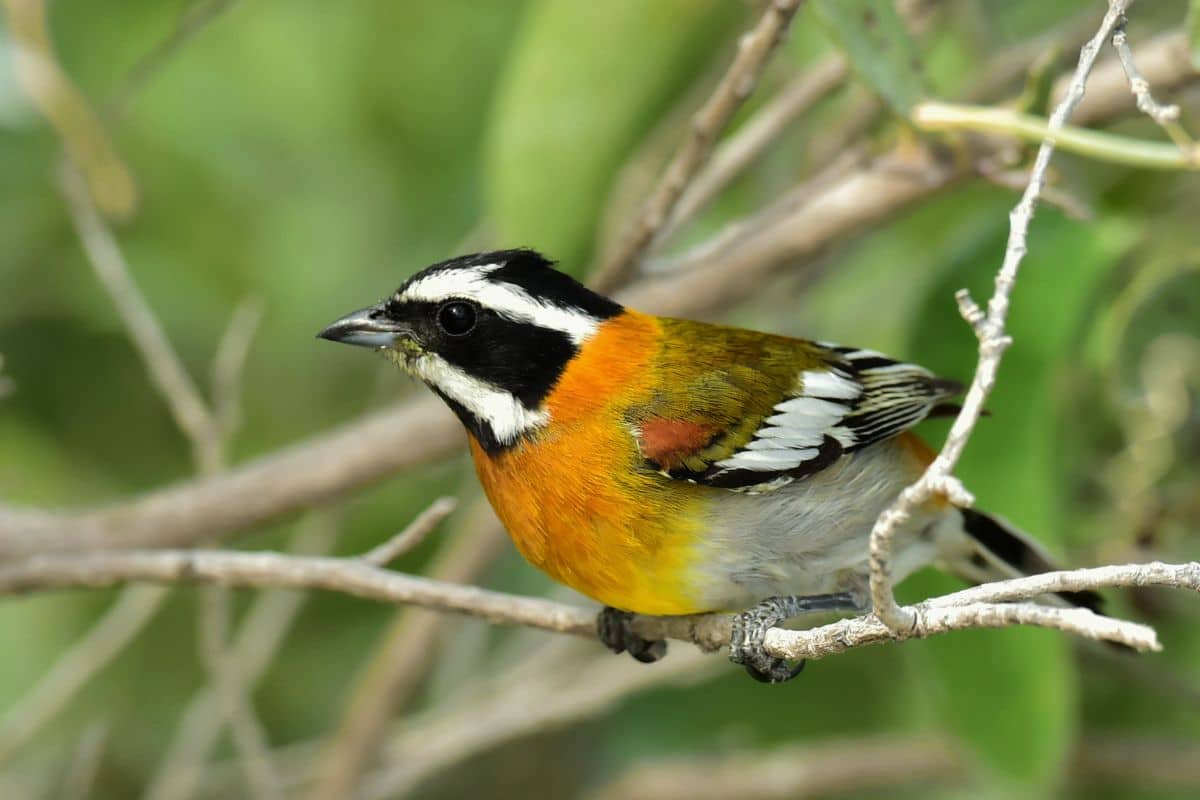
The Western Spindalis has a bright orange breast and collar, and the males tend to have much more brilliant colors than the females. You can find these birds in the West Indies and sometimes in southeastern Florida; they prefer moist tropical areas.
20. Stonechat
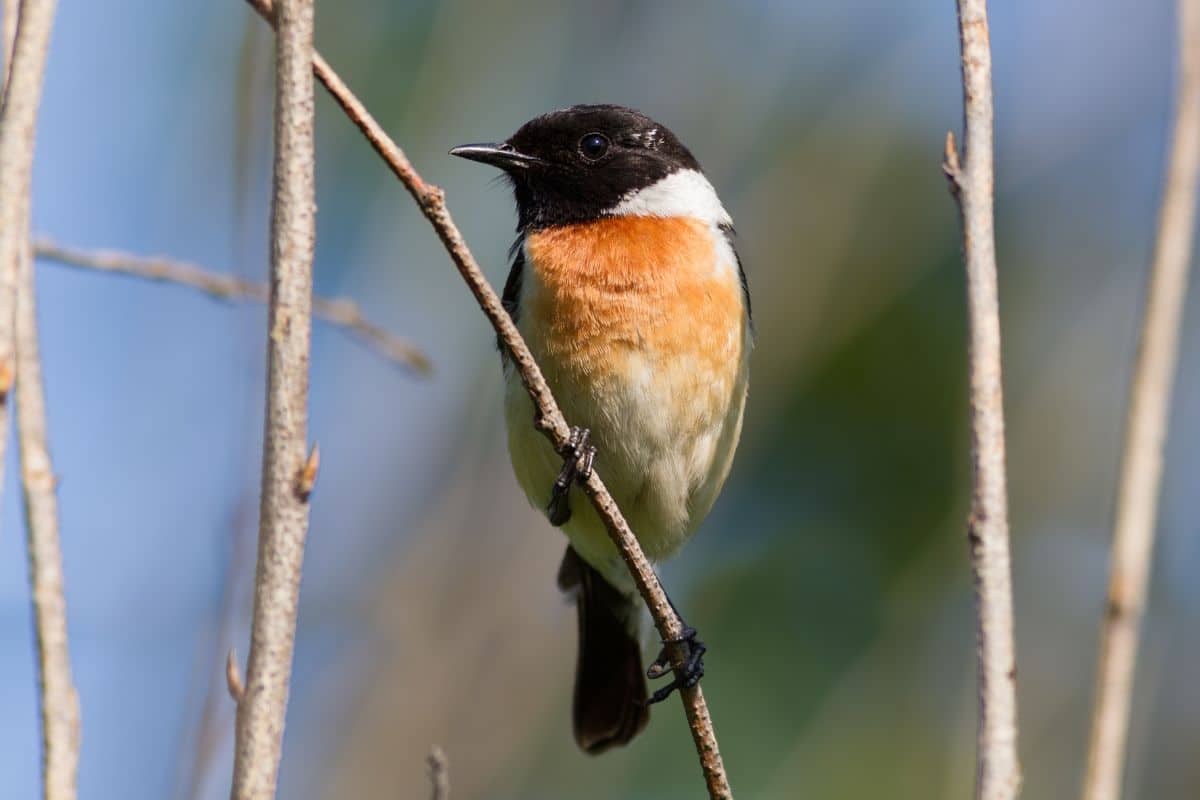
You will see Stonechat perched on low bushes, flicking their wings. They have a very short call and breed in the West and south of the UK. These orange-breasted birds eat invertebrates, seeds, and small fruit.
21. House Finch
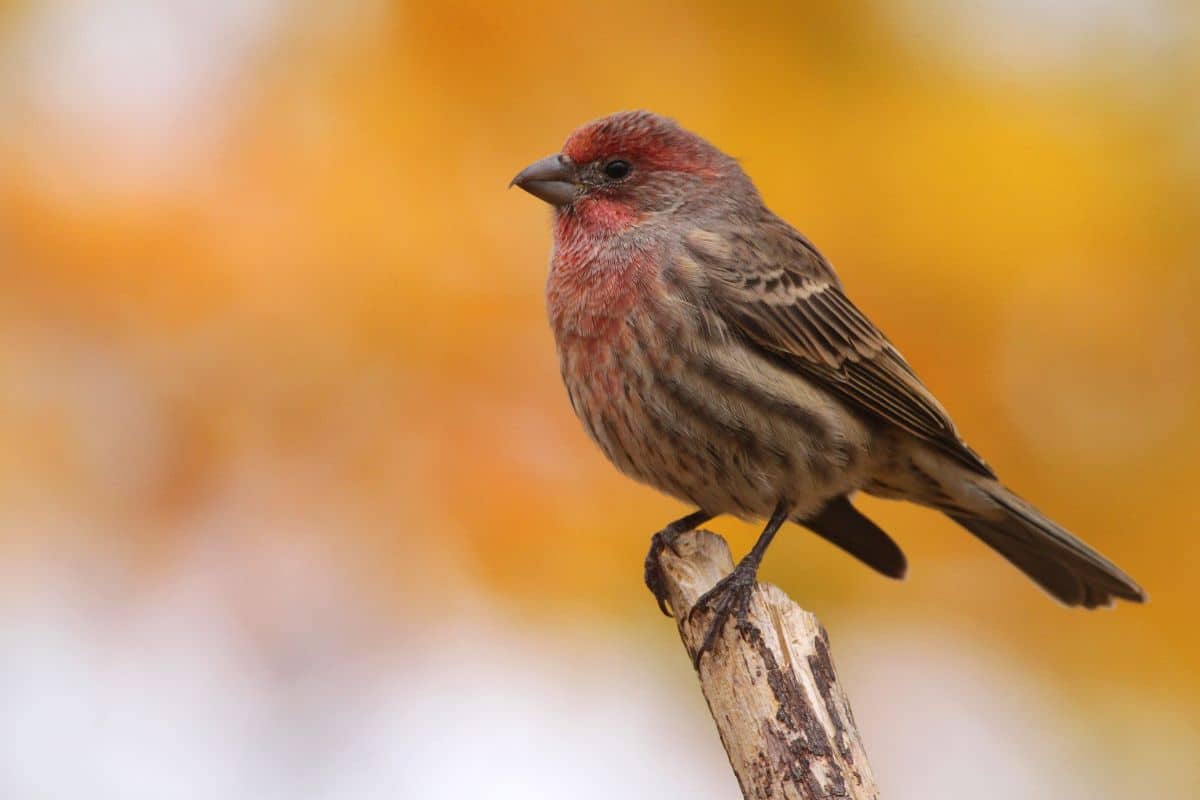
The House Finch is one of North America’s most common songbirds you’ll find in your backyard. The male House Finch has orange streaks along its breast. You will probably hear these birds before you see them, as they are very vocal at any time of the year. These birds eat mostly seeds.
Final Thoughts
Sometimes, you catch only a glimpse of a bird. Knowing which distinguishing characteristic to look for may help you identify the type.
